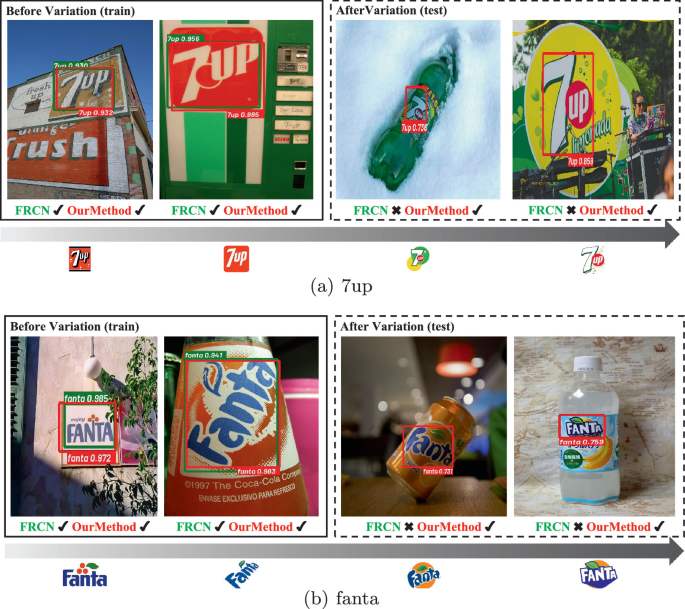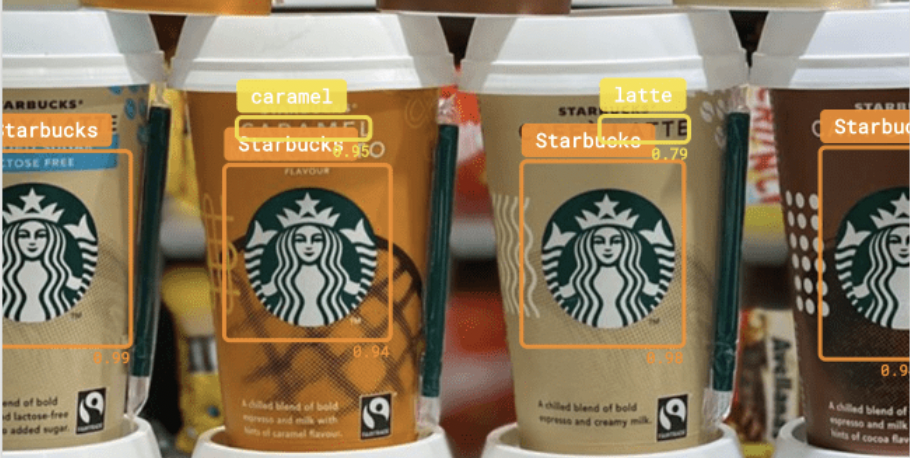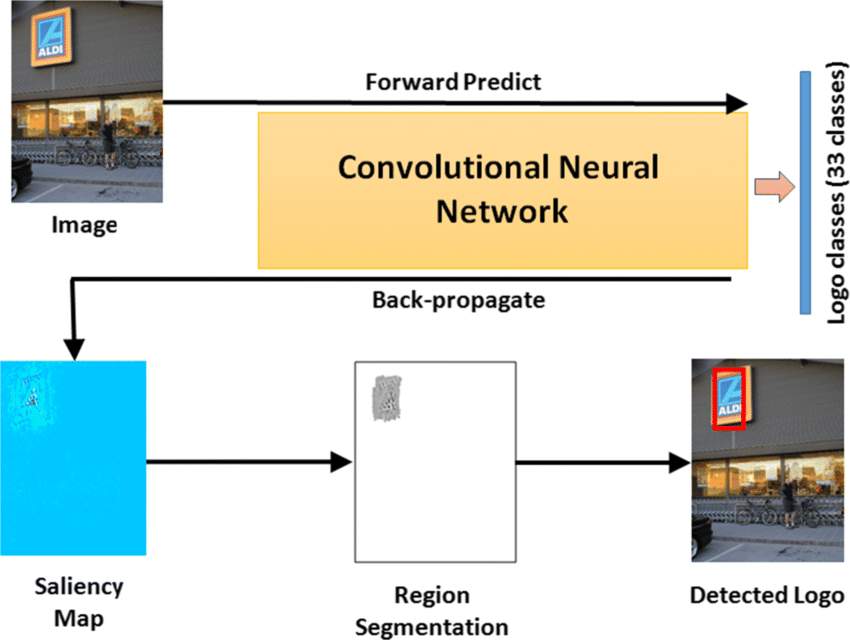In today’s digital landscape, where brands are constantly striving to gain recognition and consumer loyalty, logo detection plays a vital role. Logo detection refers to the process of identifying and localizing logos within images or videos using advanced machine-learning techniques. By automating this task, businesses can streamline brand monitoring, protect their intellectual property, and gain valuable insights into consumer behavior. This article explores the significance of logo detection machine learning, popular algorithms, and the challenges faced in the process.
What is Logo Detection?

Logo detection involves identifying and localizing logos within images or videos. A logo is a visual symbol that represents a brand or organization. With the ever-increasing use of digital media, logos have become integral to brand identity and recognition. Logo detection algorithms enable the automated identification of logos in various contexts, providing valuable information for marketing, advertising, and intellectual property protection.
Importance of Logo Detection
Logo detection holds immense importance in several domains. Firstly, it enables brand monitoring and protection. By automatically scanning vast amounts of visual content, businesses can detect unauthorized use of their logos, ensuring brand integrity. Additionally, logo detection aids in advertisement analysis by identifying logo placements in different media channels, helping businesses evaluate the effectiveness of their marketing campaigns. Furthermore, in social media marketing, logo detection allows companies to track the reach and impact of their brand by monitoring user-generated content.
Logo Detection Machine Learning

Machine learning techniques form the foundation of logo detection systems. Various approaches are employed, such as supervised learning, unsupervised learning, and deep learning, to extract meaningful features and classify logo presence accurately.
Supervised Learning
Supervised learning algorithms learn from labeled datasets, where each sample is associated with a corresponding label indicating logo presence or absence. These algorithms generalize from the training data to identify logos in unseen images or videos. Support Vector Machines (SVM), decision trees, and logistic regression are commonly used supervised learning algorithms in logo detection.
Unsupervised Learning
Unsupervised learning algorithms, such as clustering algorithms, analyze the structure of unlabeled data to discover patterns and group similar images together. These techniques can be useful for logo detection when the dataset does not provide labeled samples.
Deep Learning
Deep learning, a subset of machine learning, has revolutionized logo detection by leveraging artificial neural networks with multiple layers to automatically learn features from data. Convolutional Neural Networks (CNN) are particularly effective in logo detection tasks due to their ability to capture hierarchical features. CNN models like YOLO (You Only Look Once) and Faster R-CNN have demonstrated exceptional performance in logo detection.
Steps in Logo Detection Using Machine Learning
Logo detection involves several sequential steps to accurately identify and localize logos in images or videos.
Data Collection and Preprocessing
The first step is to gather a diverse dataset of images or videos containing different logos. This dataset should cover various variations in logo designs, backgrounds, and lighting conditions. Also, preprocessing techniques like resizing, cropping, and normalization are applied to ensure consistency and improve model performance.
Feature Extraction
Next, relevant features are extracted from the preprocessed images or videos. Features can include color histograms, texture descriptors, or more complex representations like deep features extracted from CNN models.
Model Training
The extracted features are used to train a machine-learning model. The model learns from the labeled dataset and generalizes the relationship between input images/videos and logo presence. Various algorithms, including SVM, CNN, and Random Forests, can be employed for this purpose.
Testing and Evaluation
Once the model is trained, it is tested on a separate set of images or videos to assess its performance. Evaluation metrics such as precision, recall, and F1-score are used to measure the accuracy of the logo detection system.
Popular Machine Learning Algorithms for Logo Detection

Several machine learning algorithms have proven effective for logo detection tasks. Here are three commonly used approaches:
Support Vector Machines (SVM)
SVM is a supervised learning algorithm that performs classification by finding an optimal hyperplane that separates data into different classes. SVM has been successfully applied to logo detection due to its ability to handle high-dimensional feature spaces and robustness against overfitting.
Convolutional Neural Networks (CNN)
CNNs are a class of deep learning models specifically designed to analyze visual data. These networks use convolutional layers to automatically extract features from images or videos. CNN-based models have shown exceptional performance in logo detection tasks, surpassing traditional machine learning approaches.
Random Forests
Random Forests is an ensemble learning algorithm that combines multiple decision trees to make predictions. It can handle high-dimensional data and provide good generalization capability. Also, random Forests have been utilized in logo detection due to their ability to capture complex relationships between features and logo presence.
Applications of Logo Detection
Logo detection finds applications across various industries and domains due to its potential to extract valuable insights. Some notable applications include:
Brand Monitoring and Protection
Logo detection allows businesses to monitor where and how their logos are being used. Also, this helps identify instances of logo misuse or unauthorized associations, enabling proactive protection of brand reputation and intellectual property.
Advertisement Analysis
By detecting logos in advertisements across different media channels, businesses can assess the effectiveness of their marketing campaigns. Logo detection provides insights into logo visibility, placement, and consumer engagement, facilitating data-driven decisions for future campaigns.
Social Media Marketing
Logo detection on social media platforms enables companies to analyze brand exposure and sentiment. Also, by monitoring user-generated content, businesses can gauge the impact of their brand, identify influencers, and engage with customers more effectively.
Challenges in Logo Detection
Despite advancements in machine learning, logo detection still faces certain challenges:
Variations in Logo Designs
Logos come in various shapes, colors, sizes, and orientations. This variation makes it challenging to develop a robust logo detection system that can accurately identify logos under different conditions.
Occlusion and Background Noise
Logos may be partially occluded or embedded within complex backgrounds, making their detection challenging. Overlapping objects or cluttered scenes can introduce noise and hinder accurate logo detection.
Scalability
Scaling logo detection to large datasets or real-time applications poses computational challenges. Also, efficient algorithms and hardware acceleration techniques are necessary to handle the increasing demand for logo detection in real-world scenarios.
Future Trends in Logo Detection Machine Learning

As technology advances, several trends are expected to shape the future of logo detection:
- Improvement in Deep Learning Models: Continued advancements in deep learning architectures and training techniques will enhance the accuracy and efficiency of logo detection systems.
- Domain-Specific Models: Tailoring logo detection models for specific industries or domains will improve performance by focusing on the unique characteristics and challenges of logo detection within those contexts.
- Real-Time Logo Detection: Rapid developments in hardware, such as GPUs and specialized accelerators, will enable real-time logo detection, opening doors to applications in live video streams and augmented reality.
- Semantic Logo Understanding: Future logo detection systems may incorporate semantic understanding to extract deeper meaning from logos, enabling more nuanced analysis and insights.
Conclusion
Logo detection powered by machine learning holds immense potential for brand monitoring, advertisement analysis, and social media marketing. With the ability to automatically identify and localize logos, businesses can protect their brand identity, optimize marketing campaigns, and engage with customers more effectively. Despite challenges, advancements in deep learning, scalability, and domain-specific models will continue to drive improvements in logo detection, enabling businesses to harness the power of visual recognition.
To experience the benefits of logo detection and explore its applications for your business, we invite you to request a demo from Aim Technologies. See firsthand how our advanced logo detection solutions can enhance your brand monitoring, advertisement analysis, and social media marketing strategies.
FAQs
Q1. What is the role of machine learning in logo detection?
- Machine learning plays a crucial role in logo detection by enabling automated identification and localization of logos within images or videos. It allows businesses to analyze large volumes of visual content, monitor brand usage, and gain valuable insights into consumer behavior.
Q2. Which machine learning algorithms are commonly used for logo detection?
- Commonly used machine learning algorithms for logo detection include Support Vector Machines (SVM), Convolutional Neural Networks (CNN), and Random Forests. These algorithms can effectively learn from labeled datasets and extract features to accurately identify logos.
Q3. What are the applications of logo detection?
- Logo detection finds applications in brand monitoring and protection, advertisement analysis, and social media marketing. It helps businesses safeguard their brand reputation, evaluate marketing campaigns, and understand brand reach and impact on social media platforms.
Q4. What challenges are faced in logo detection?
- Logo detection faces challenges such as variation in logo designs, occlusion and background noise, and scalability. The diverse nature of logos, occlusion in images or videos, and the need for efficient processing of large datasets pose significant hurdles in achieving accurate and scalable logo detection.
Q5. What are the future trends in logo detection?
- Future trends in logo detection include improvements in deep learning models, the development of domain-specific models, real-time logo detection, and the incorporation of semantic understanding. These advancements will enhance accuracy, scalability, and provide deeper insights from logo detection systems.


